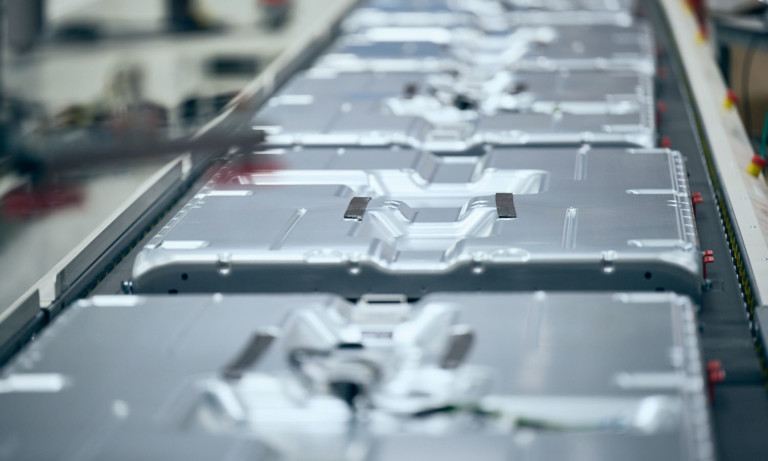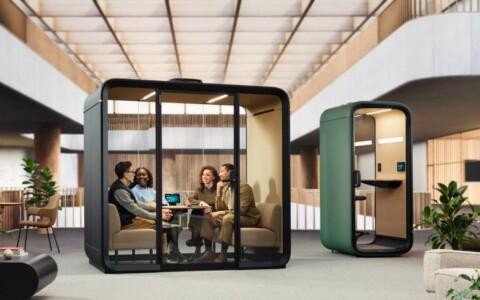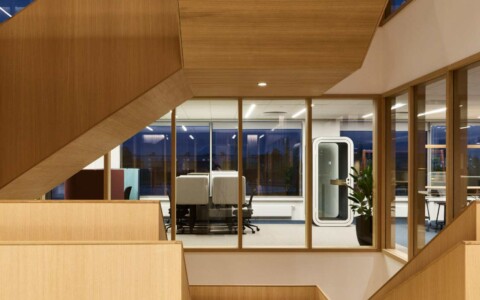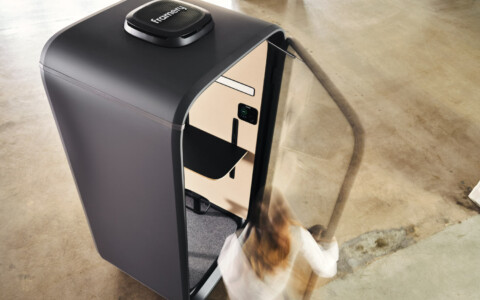Steel and aluminum are among the best materials for building long-lasting, safe, and sustainable office pods. Furthermore, using steel and aluminum enables companies, like Framery, to build high-quality, bespoke, and accurate parts for their pods and booths.
At Framery, we already use recycled aluminum and steel in our pods, but now we are going one step further by being the first smart pod manufacturer in the world to commit to using fossil free steel as soon as the material becomes available in 2026. We see this not as a choice but a necessity.
Key highlights
- The steel industry contributes significantly to global CO2 emissions, accounting for about 7% of total emissions. To combat this, Framery is committed to using fossil-free green steel in our smart pods.
- Both steel and aluminum can be recycled almost indefinitely without losing quality. Recycling aluminum and steel significantly lowers the environmental impact and costs of sourcing new materials.
- Framery aims to reduce the CO2 emissions of our smart pods by 50% per pod by 2028. Adopting green steel is one step towards this goal, making our smart pods more sustainable.
Steel and aluminum have a long lifecycle
Although steel and aluminium production requires energy—which can be based on non-renewable resources—once the material is produced, it can be used again and again. As long as these two materials are recycled and reused thoughtfully, this is the last step in their life cycle requiring significant energy use.
Therefore, the energy needed in steel and aluminum’s remaining life cycle is mainly spent in their recycling process. Even the electricity required for recycling can be produced with environmentally friendly methods, such as CO2-free solar and wind energy, or nuclear energy.

Unfortunately, the production of new steel and aluminum is an energy-intensive process. For instance, the coal-based blast furnace-basic oxygen (BF-BOF) method accounts for well over half of global crude steel capacity and is the primary source of emissions within the sector. Meanwhile, the less carbon-intensive electric arc furnaces (EAF) contribute to about a third of production. However, even this technology contributes significantly to overall emissions, especially if powered by fossil fuels
Despite its countless benefits and applications, steel is heavily contributing to climate change. The great news is that exciting work is being done on fossil-free steel manufacturing, where fossil fuels such as gas and coal are replaced with hydrogen. As a result, the steel manufacturing process emits water rather than carbon dioxide as a by-product.
“From 2026, as soon as the material/steel becomes available, we will start bringing fossil-free steel pods to offices worldwide.” – Samu Hällfors, CEO, Framery
The technology for making fossil-free steel does exist, and many companies have invested heavily in more sustainable steel-making technologies. We at Framery will tap into the possibility of using fossil free steel once available.
Pros and cons of aluminum and steel
- Both steel and aluminum are versatile materials that are suitable for different applications. Because of its lightweight qualities, aluminum is a popular material in vehicles where light materials help reduce fuel consumption.
- Despite them being lightweight, both materials are still durable. Steel, for instance, can endure both weight and heat. Aluminum, on the other hand, is corrosion-resistant, making it a reliable material even in long-term use and demanding conditions.
- Because there is a well-established infrastructure for recycling metals, steel, and aluminum can be repurposed once they are no longer needed in their current use. Both can be recycled from pre-existing materials and scrap metal without their quality suffering in the recycling process.
- It is essential that these materials are recycled and reused as both aluminum and steel require a great deal of energy to produce. Fortunately, technology is being developed to make even the production of new metals, such as fossil-free green steel, more sustainable.
- Additionally, neither steel nor aluminum is renewable, which is why repurposing them reduces the need to extract finite resources from the ground.
Framery’s Smart Pods are, on average, 30% less emission-intensive than building a meeting room over their lifecycle, 100% recyclable, and more durable.
Are aluminum and steel sustainable materials?
Although steel and aluminum are not renewable, both can be excellent and sustainable choices for different uses. One benefit of steel and aluminum is that they are durable and long-lasting. They can also be used and reused almost indefinitely once collected and recycled after use.
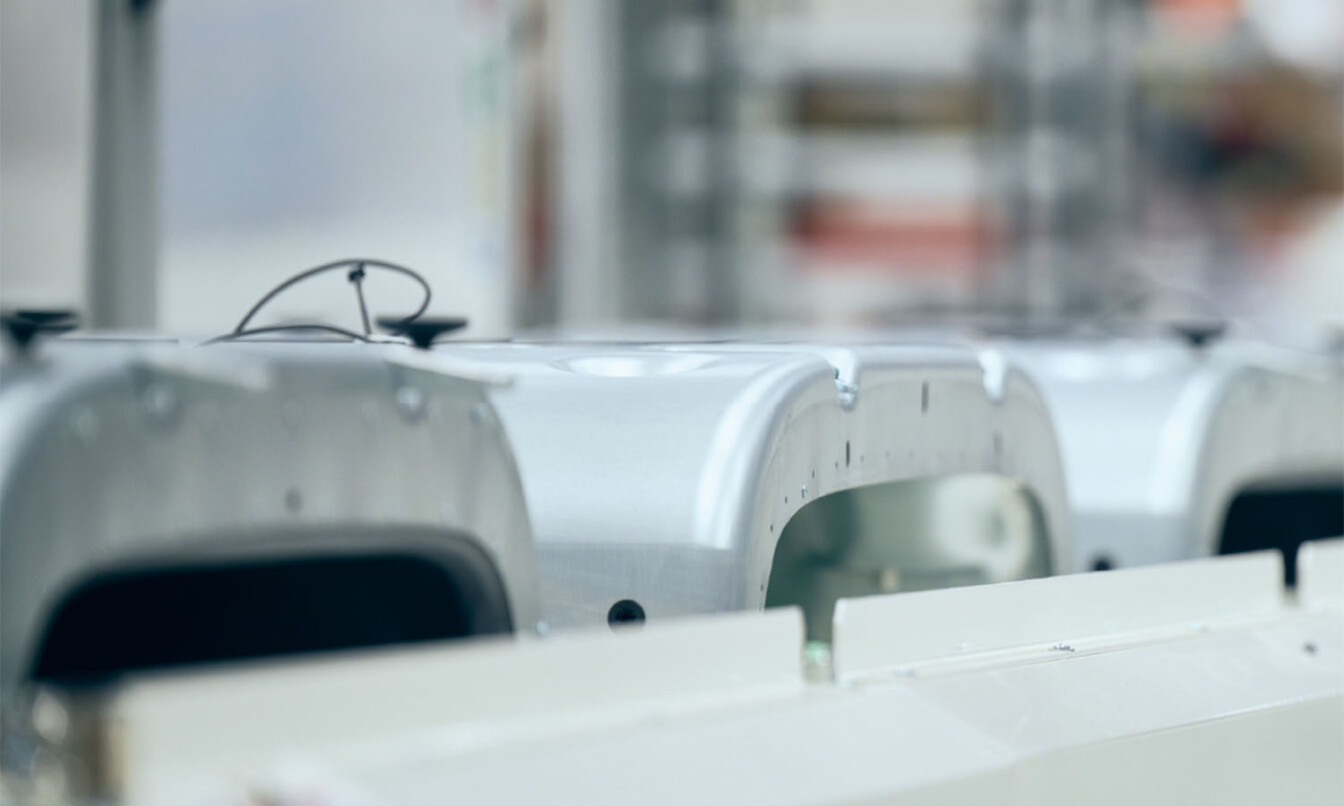
One benefit of steel and aluminum over many other materials, such as plastic, is their quality does not suffer from recycling. Because of this attribute of steel and aluminum, the environmental impact and cost to businesses are significantly lower when compared to producing new materials that would require excavating new natural resources.
At Framery, we always aim to increase the share of recycled content in our products – 20% of the steel structure is made of recycled steel.
Framery smart pods’ interiors are constructed with steel to make them sturdy and long-lasting. Additionally, steel can be easily recycled after the pod has reached the end of its lifecycle. Rather than simply disposing of Framery pods after use, we can give old pods a new life by upgrading and refurbishing the pod or its individual parts.
Through rigorous product development, we have reduced the amount of plywood in our pods radically, thus making them lighter, yet keeping up with the Framery quality and performance our customers expect from us.
Explore all Framery pods
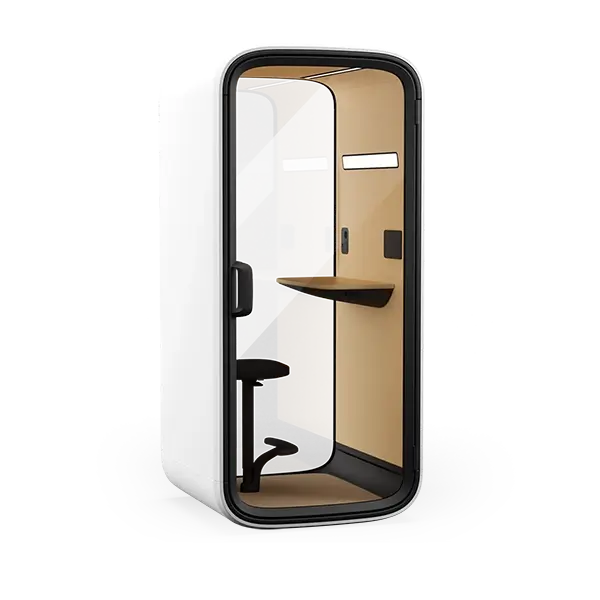
Why fossil-free steel?
Steel is used in many applications across industries—and for good reason. Yet, its impact on the climate is not negligible due to the energy-intensive manufacturing process using fossil fuels and producing CO2 into the atmosphere. Therefore, we need to rethink our relationship with steel to meet ambitious climate objectives, such as the Paris Agreement’s goal to limit global temperature rise to 1.5°C above pre-industrial levels.
Framery is committed to buildling more sustainable smart pods and workplace products. Using fossil-free steel, Framery will start bringing fossil-free steel pods to offices worldwide from 2026.
- The steel industry is responsible for around 7% of CO2 emissions globally.
- Around 75% of steel is made in coal-fired blast furnaces, producing large amounts of carbon dioxide.
- Emissions from building materials and construction account for 11% of all emissions. Office furniture is also the biggest contributor to furniture waste globally.
Steel production has a notable impact on the world’s climate. Fossil-free steel aims to reduce the industry’s CO2 emissions as an alternative to steel produced in coal-fired furnaces. When using green hydrogen from renewable CO2-free sources, steel production does not produce any CO2 emissions, making it fossil-free.
Download our 2023 Sustainability Report
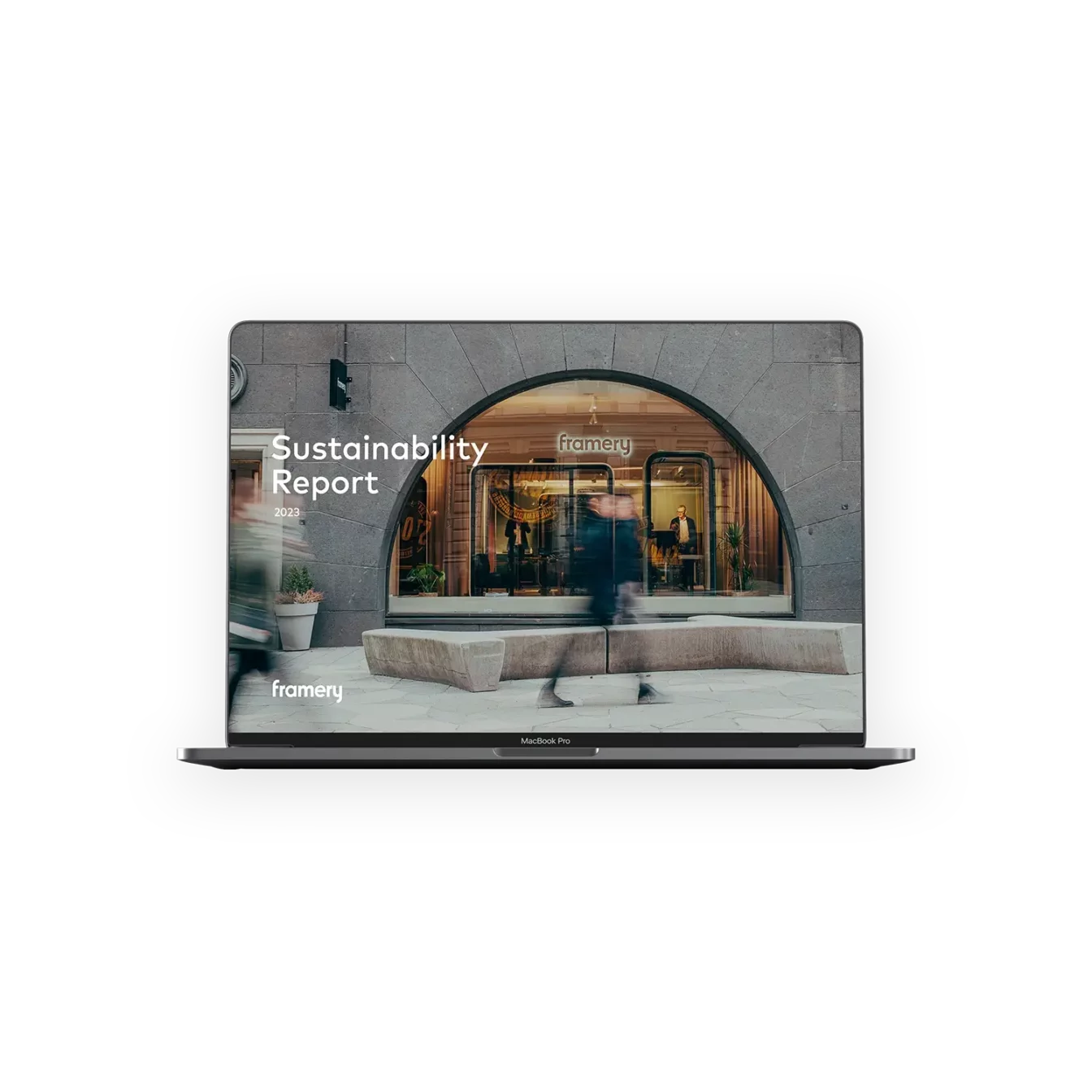
Revolutionizing the smart pod industry
We are making our pods increasingly sustainable with an objective to reduce CO2 emissions by 50% per pod by 2028 compared to 2023. This is only possible by constantly innovating new products and technologies instead of waiting for others to do it first.
Framery smart pods have a 30% lower carbon footprint than constructed meeting rooms over a 20-year lifespan.
The Framery Subscribed model promotes a circular economy by allowing our customers to subscribe to a Framery pod without long-term commitments. Once the pod has served its users, it can be given a new life. Framery Subscribed is currently available in selected markets for different Framery products, such as the Framery One and Framery Six.
Explore all Framery pods

FAQs about green steel
What is the difference between green and fossil-free steel?
Not all green steel is fossil-free. Generally, green steel refers to a greener and more sustainable steelmaking process. To be truly fossil-free, the steel-making process should not involve any fossil fuels or CO2 emissions. Instead of coal and coke, the fossil-free production uses green hydrogen as an alternative. As a result, the only by-product of the process is water instead of CO2. The produced water can then be put back into the process to produce more hydrogen. When the hydrogen is also CO2-free, the resulting steel is fossil-free.
How much does the steel industry contribute to global CO2 emissions?
The iron and steel industry’s carbon footprint is notable. Based on some estimates, it accounts for approximately 11% of global CO2 emissions and about 7-9% of total greenhouse gas emissions. Since 2019, the steel sector has averaged around 3.7 billion tonnes of CO2 emissions per year, exceeding the total emissions from all passenger vehicles globally. To put this into perspective, if the steel industry were considered a country, it would rank as the world’s fifth largest producer of carbon emissions.
How are renewable electricity and green hydrogen used in steel production?
The majority of steel is produced using the blast furnace-basic oxygen furnace (BF-BOF) method, which is more carbon-intensive compared to electric arc furnaces (EAF). Although the latter is also a notable contributor to steel production’s environmental impact, it can utilize scrap metal and be powered with low-carbon, renewable electricity. Green hydrogen is used to replace carbon in steel-making, producing water vapor instead of CO2. This shift is crucial for decarbonizing steel production, and the integration of hydrogen into the steel-making process can lead to a substantial reduction in emissions.

